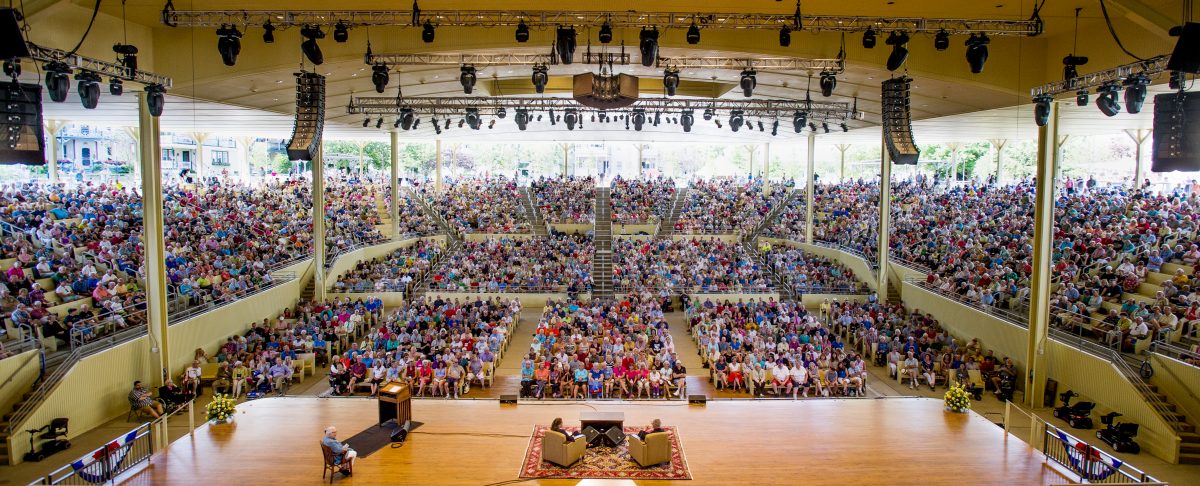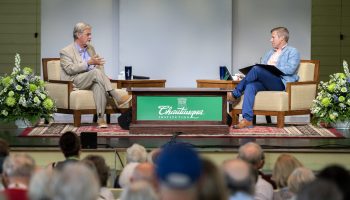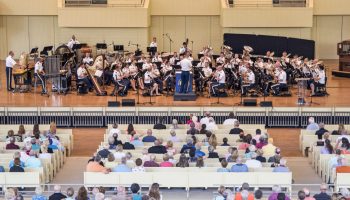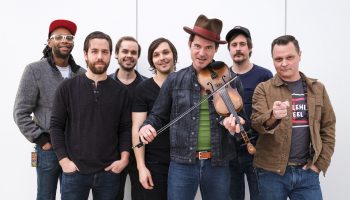The new Amphitheater has done its job this summer, hosting an array of varied and sophisticated events, from the musical and artistic to the entertaining and educational. But there is work to be done after the season before general contractor LPCiminelli can turn over the new Amp to the Institution.
“The bench issue may be of most general interest,” said John Shedd, the Institution’s director of operations, who has been the administration’s point man on the Amp project almost from its inception at least eight years ago. “We’ll replace all the benches that are substandard or have developed flaws.”
The original bench subcontractor, a firm based in Nebraska, was unable to deliver the required 7,000 linear feet of benches in time for the opening of the season. The Institution scrambled and found creative, acceptable alternatives, but the issue remains unsettled. Shedd said all benches will be up to standard and in place before the beginning of the 2018 season.
Site work remains around the back of the house on the lake side of the Amp complex. An extensive flagstone patio, rain gardens and new handrails all await installation. Local contractor Frey Electric still needs to install lights at the end of the Amp benches and complete the grid of electric lights in the attic.
Meanwhile, the Amp seems almost papered with certifications, as is the way with large capital projects. Shedd said that the Amp this summer has been operating under a temporary certificate of occupancy issued by the town of Chautauqua. That certificate was provided following certification by general contractor LPCiminelli that, with the exceptions listed on a referenced punch list, the Amp project was complete.
That punch list, developed in turn by lead architect Marty Serena in accordance with a certificate of substantial completion, now becomes the basis for off-season work to complete the project. At some point in the off-season, “Ciminelli will hand us the keys and the Amp will belong to Chautauqua,” Shedd said.
Among the more significant items on the punch list are miscellaneous heating, ventilation and air conditioning improvements and completion of a heating system not deemed necessary for use during the summer. An acoustic barrier will be erected around the condenser units on the north side of the Amp, near the loading bay. A fair amount of ductwork and insulation remains. Utility access panels await installation.
Institution officials have long mentioned their desire to have the new Amp certified as a leadership in energy and environmental design (LEED) building. The authority in such matters is the U.S. Green Building Council in Washington, D.C. Before a final LEED certificate is issued, a checklist inspection by a third-party commissioning agent is required. The Institution remains confident that the LEED certificate is attainable.
Standing out almost uniquely in a sea of praise for the new Amp early in the season were critical comments about acoustics in the arena. Acoustic expert Ben Bausher, of the specialized consulting firm Jaffe Holden of Connecticut, has been working this summer, taking readings and suggesting measures to ameliorate the situation.
“Ben worked with our normal sound equipment contractor, Advanced Product Group of Dunkirk, and our own Amp staff sound master Chris Dahlie,” Shedd said. “In fact, Ben was here (Week Eight), taking measurements and samples both at the Chautauqua Symphony Orchestra rehearsal and at its evening performance. He also assessed the space at the 10:45 a.m. Sunday church service and at a family entertainment event. We’ll get a report from him on what measures we need to take to improve things.”
One of the potential remedies for sound deficiencies would be the height and direction of speaker clusters around the Amp. Another would be selective installation of sound curtains.
“We have a number of options at our disposal,” Shedd said.
“It’s been a long race,” he added. “But the finish line is certainly in sight.”





